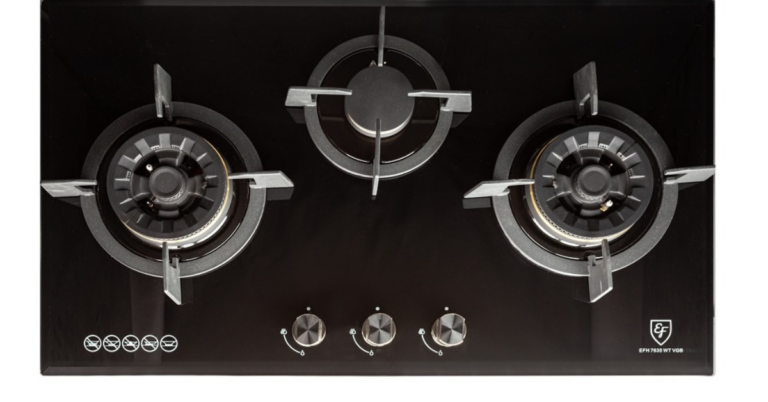Industrial Exhaust Fan Singapore: Enhancing Ventilation for Health, Efficiency, and Safety
In modern industrial settings, proper ventilation is not simply a convenience — it is vital for maintaining healthy, safe, and productive operations. One of the key solutions in this domain is the Industrial Exhaust Fan Singapore a robust ventilation component designed to remove stale air, control temperature, mitigate humidity, and evacuate airborne pollutants in factories, warehouses, and large facilities. In Singapore’s tropical climate and dense industrial zones, a well-engineered exhaust system plays a crucial role in sustaining indoor air quality and operational efficiency.
The Role of Industrial Exhaust Fans in Singapore’s Industrial Landscape
Singapore’s industrial sector encompasses everything from electronics manufacturing, chemical processing, food and beverage production, to logistics and warehousing. These environments face challenges of heat, humidity, dust, fumes, and strict regulatory standards for air quality. An industrial exhaust fan helps by continuously drawing out contaminated or overheated air and replacing it (directly or indirectly) with fresher ambient air.
Some of the core functions and advantages of deploying industrial exhaust systems include:
-
Temperature and heat control: By expelling hot air, exhaust fans help lower indoor temperatures and reduce the burden on air conditioning systems.
-
Humidity and moisture management: High humidity accelerates corrosion, encourages mold growth, and degrades stored goods. Exhaust systems aid in moisture removal and maintain stable humidity levels.
-
Pollutant removal: Factories can generate dust, chemical vapors, fumes, and odors. An exhaust fan helps remove these contaminants and helps maintain healthier air for workers.
-
Energy efficiency: By reducing the need for full-time air conditioning or localized cooling, exhaust fans provide a more energy-efficient alternative, especially when combined with intelligent controls.
-
Workplace comfort and productivity: A cooler, cleaner environment improves worker comfort, reduces heat stress, and can thus improve productivity.
-
Protection of equipment and materials: Lower temperature and controlled humidity reduce wear and deterioration of sensitive machinery, electronics, and stored goods.
In Singapore’s regulated industrial zones, maintaining air standards is particularly critical in sectors such as food processing, pharmaceuticals, and precision manufacturing. Any lapse in ventilation could lead not only to reduced efficiency but also to regulatory noncompliance and reputational risk.
Types of Industrial Exhaust Fans
Industrial exhaust fans come in a variety of designs depending on the application, airflow requirement, mounting style, and environmental constraints. Some common types include:
-
Wall-mounted exhaust fans
Mounted on external walls, these fans draw indoor air outwards. They are common in smaller factories or supplementary ventilation zones. -
Ceiling or roof-mounted fans
In large industrial halls with high ceilings, ceiling exhaust fans (or roof-mounted exhausts) are effective in venting the hottest, stratified air layers. -
Axial fans
These push air along the axis of rotation. They are suitable for high-flow, low-resistance applications, like general ventilation in warehouses. -
Centrifugal (or radial) fans
These provide higher pressure and are suited to ducted systems or handling heavier loads (e.g., dust-laden or corrosive air). -
High-volume, low-speed (HVLS) fans
Though not purely “exhaust” in nature, HVLS fans help mix and distribute air, reducing stratification and improving overall airflow when paired with exhaust systems. -
In-line fans / duct fans
These sit within ductwork, pushing or pulling air along confined ducts to connect remote zones to main exhaust outlets.
Correct selection depends on factors such as required airflow (CFM / m³/h), pressure drop, duct layout, noise constraints, ambient conditions, and energy consumption.
Key Design Considerations for Singapore Conditions
When specifying industrial exhaust fans in Singapore, designers and facility engineers should account for several unique challenges and constraints:
1. Tropical Climate and High Humidity
Singapore’s ambient humidity is high, and indoor environments can accumulate moisture rapidly. Fans must resist corrosion, and seals and coatings should be suitable for humid and saline (if near coastal) conditions.
2. Thermal Load and Stratification
In tall warehouse halls or factories, heat tends to accumulate near the ceiling. Exhaust fans should target these stratified hot layers or be combined with air-mixing systems to prevent thermal layering and uneven temperature zones.
3. Energy Efficiency and Control
Given high energy costs, exhaust systems should be designed with variable speed drives (VSDs), demand-based controls (e.g. temperature or pollutant sensors), or integration with building management systems (BMS). This ensures fans respond to real-time ventilation needs rather than running continuously at full capacity.
4. Noise and Vibration
Singapore has regulations and community proximity constraints. Fans should be specified to minimize noise levels, use acoustic attenuators if needed, and be balanced to reduce vibration.
5. Maintenance, Accessibility, and Reliability
Industrial fans must be robust and easy to maintain grease points, bearings, and motor access should be considered. Downtime is costly, so selecting high-quality, durable components is vital.
6. Compliance and Safety
Fan installations must comply with local building codes, fire safety provisions, and ventilation standards (e.g. Singapore’s Workplace Safety and Health guidelines). Safety guards, fire-rated dampers, and access platforms may be required.
Application Scenarios in Singapore Industries
To illustrate how industrial exhaust fans are used across sectors, here are a few scenarios:
Factories and Manufacturing Plants
In electronics or semiconductor manufacturing, clean air is mandatory. Exhaust fans help remove particulate matter, heat, and vapors from chemical processes. Combined with cleanrooms and localized fume hoods, exhaust fans maintain process integrity and worker safety.
Warehouses & Logistics Hubs
Tall-aisle warehouses often suffer from stratification—warm air trapped near roofs and cooler zones near goods. Implementing both exhaust fans (to remove the hot upper air) and circulation fans (to mix air) helps maintain uniform temperatures and reduce cooling energy.
Food Processing & Cold Storage
Humidity control and odor removal are crucial. Exhaust fans extract moisture-laden air from wash-down areas or cooking zones, helping prevent mold growth and preserving product integrity.
Chemical & Petrochemical Facilities
Exhaust fans remove hazardous gases, fumes, and vapors. These systems must be explosion-proof, corrosion-resistant, and conform to stringent safety standards.
Workshops & Assembly Lines
Metalworking, painting, or welding shops generate fumes and dust. Exhaust fans placed at source zones, combined with ducting and hoods, ensure contaminants do not diffuse across production areas and jeopardize worker health.
Benefits and Impacts
Deploying industrial exhaust fans in Singapore yields numerous operational, financial, and environmental benefits:
-
Reduced energy consumption. By lowering indoor temperature and offloading cooling demand, facilities can often cut HVAC energy use significantly.
-
Improved indoor air quality. Sustained removal of pollutants, moisture, and odors fosters healthier environments.
-
Enhanced worker productivity. Comfortable air conditions lead to lower fatigue, fewer heat-related health issues, and better morale.
-
Extended lifespan for equipment and inventory. Temperature and humidity control reduces stress on machinery and materials.
-
Scalability and flexibility. Modular exhaust systems can be expanded or upgraded as facility needs change.
-
Lower maintenance and downtime costs. A well-designed exhaust system that avoids recirculation, condensation, and buildup reduces service intervals and breakdown risks.
Challenges and Mitigation Approaches
While industrial exhaust fan systems offer many advantages, they come with challenges. Awareness and proactive strategies ensure reliable performance:
Balancing Intake and Exhaust
Exhaust systems must maintain proper pressure balance; if too much air is removed without sufficient makeup air, negative pressure may develop, disrupting doors or drawing in contaminants. Providing controlled air inlets or dedicated makeup air units is essential.
Dust and Particulate Handling
In dusty processes, fans and ducts accumulate deposits, reducing performance. Regular cleaning schedules, self-cleaning fans, and prefilters help maintain system efficiency.
Corrosion and Environmental Exposure
Exterior-mounted sections may be exposed to rain, salt spray, or chemical fumes. Use corrosion-resistant materials (stainless steel, coated metals), weather hoods, and proper sealing.
Noise Control
High-speed fans and airflow through ducts generate noise. Use acoustic liners, silencers, vibration isolation pads, and low-noise fan models where needed.
System Integration
Fans shouldn’t be isolated; they must integrate with sensors, controls, fire alarms, and energy management systems. Poor integration leads to inefficient or unsafe operation.
Initial Investment and ROI
Though capital cost can be significant, owners must view exhaust systems as long-term investments. Payback analysis should account for energy savings, productivity gains, and maintenance reduction.
Best Practices for Specifying Industrial Exhaust Fans
When planning or upgrading an industrial ventilation system in Singapore, engineers and decision-makers should follow these best practices:
-
Perform Accurate Load and Ventilation Calculations
Model heat loads, pollutant generation rates, and airflow requirements rather than over-sizing blindly. -
Use Variable Speed Controls
Match fan output to real-time demand to reduce energy waste. -
Optimize Duct Layout
Design smooth, short, and well-supported duct runs to minimize pressure drops and airflow resistance. -
Include Redundancy and Zoning
For critical environments, provide backup fans or divide ventilation into multiple zones so that a fault in one doesn’t cripple the entire facility. -
Select Quality Components
Use reliable motors, bearings, control systems, and protective coatings that can withstand local climate demands. -
Plan for Access and Maintenance
Include access doors, safe platforms, and clearances for maintenance tasks without major downtime. -
Implement Monitoring and Controls
Integrate temperature, humidity, and air-quality sensors to dynamically manage fan speeds and detect system faults early. -
Schedule Preventive Maintenance
Include cleaning, lubrication, alignment checks, and fan balance assessments on a recurring timetable.
Future Trends and Innovations
Looking ahead, industrial exhaust systems in Singapore are evolving in line with technological and environmental trends:
-
Smart ventilation systems
Integration with IoT allows real-time monitoring and predictive maintenance, optimizing airflow and energy use. -
Heat recovery and energy reuse
Exhaust air often carries substantial heat content. Systems that recover and reuse this energy (e.g. in preheating make-up air) are becoming more popular. -
Low-carbon and green materials
Use of sustainable materials, efficient motors, and designs that reduce embodied carbon are gaining traction. -
Hybrid ventilation systems
In some scenarios, exhaust fans are combined with natural ventilation (louvers, wind-driven ventilators) to reduce energy usage in favorable conditions. -
Improved computational modeling
CFD (computational fluid dynamics) simulations allow precise airflow mapping and design optimization in complex factory geometries.
Conclusion
Industrial exhaust fans represent a fundamental component of ventilation systems in Singapore’s industrial sector. When thoughtfully designed, installed, and managed, they deliver critical benefits: improved indoor air quality, thermal comfort, energy savings, equipment protection, and regulatory compliance. Given Singapore’s unique climate, space constraints, and industrial demands, selecting the right fan type, integrating smart controls, and planning for maintenance are key. As industries aim for sustainability and operational excellence, exhaust ventilation will continue to play a strategic role in enabling healthier, safer, and more efficient industrial environments.







